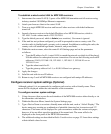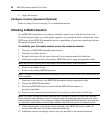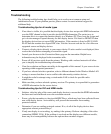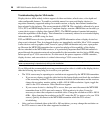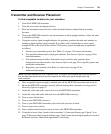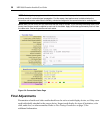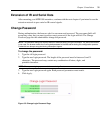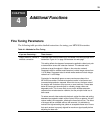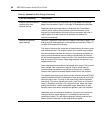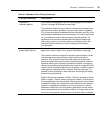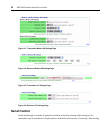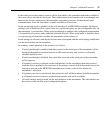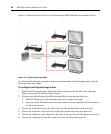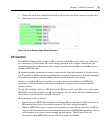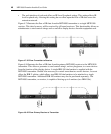
33
CHAPTER
4
Additional Functions
Fine Tuning Parameters
The following table provides detailed instructions for tuning your MPX1000 extenders.
Table 4.1: Methods for Fine Tuning
If you are fine tuning... Then choose...
choppy video for a wired or
wireless connection
Data Rate from the drop-down list on the Media LAN Settings page of the
transmitter.
Figure 4.1 on page 36 illustrates this web page.
This setting affects the degree of compression applied to video input prior
to transmission across the extension network. The selected value
indicates a target throughput in Mbps on the extension network.
Supported rates for wireless media sessions include integer values from
1 to 20 Mbps. Supported rates for wired media sessions include integer
values from 1 to 40 Mbps.
Contention for bandwidth grows as more receivers are bound to a
MPX1000 transmitter. Excessive contention results in lost frames and
increased retransmission requests. When this occurs, the frame rate of
the session will fluctuate or drop on one or more receivers. Frame rates
below 20 frames per second result in noticably choppy video and
degraded audio. This is more likely to occur with wireless extension
networks than wired extension networks, but the principle holds true in
both cases.
To restore smooth video and audio playback, adjust the data rate setting
downward as needed to obtain a frame rate of 24 fps or greater; this will
reduce media LAN congestion, allowing the frame rate to rise. The effect
of changes will be noticable within a few
seconds. It is advisable to
maintain the highest setting that yields an acceptable frame rate. Ensure
that each receiver is properly aligned for maximum signal quality before
adjusting the data rate.



